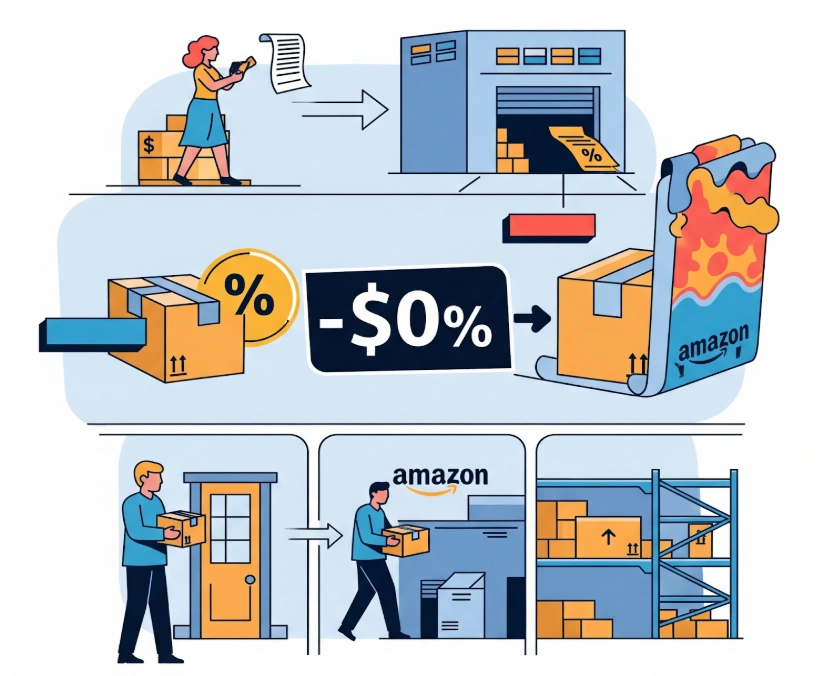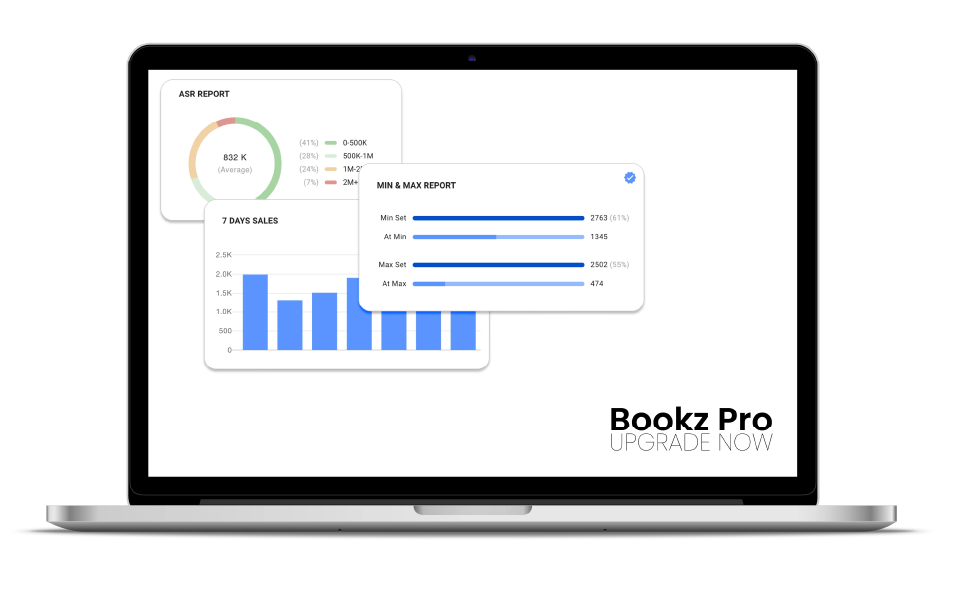How to Strategically Use the Amazon Restocking Fee to Protect Your Margins

Every Amazon seller knows the feeling—you make a sale (great!), then comes the return notification (not so great). Amazon returns are an unavoidable part of selling on the platform, but they can quietly chip away at your profits. Whether it’s damaged items or customers simply changing their minds, managing returns is both time-consuming and costly.
What if there were a legitimate, Amazon-approved way to recover some of the money lost to returns? Enter the Amazon restocking fee. It might not get much attention, but when used correctly, it’s a simple tool that can help you recoup costs and protect your bottom line.
This blog post breaks down the Amazon restocking fee in simple terms, explains why it exists, and offers a clear, practical guide on how to use it wisely—and within Amazon’s rules. You’ll learn exactly when and how much you can charge, understand the crucial differences between FBA and FBM returns, and discover common pitfalls to avoid. Get ready to transform your return strategy from a profit drain into a margin protector – all within Amazon’s guidelines.
What is the Amazon Restocking Fee?
A restocking fee is a percentage of an item’s price that sellers may charge customers when certain returns are made. It does not apply to every return, but in specific scenarios, such as when an item is returned damaged, used, or outside the return window, sellers can recover some of the costs associated with processing the return.
Why does Amazon allow this? From Amazon’s perspective, restocking fees help balance customer satisfaction with seller protection. Returns that result from buyer error (like purchasing the wrong item or returning a used product) can lead to real costs for sellers—inspection time, repackaging, depreciation, or loss of resale value. Restocking fees legally help sellers recover losses while maintaining fairness for customers who follow the rules.

That said, Amazon’s restocking fee policy isn’t universal. It only applies under clearly defined conditions and must be used responsibly to avoid penalties or account issues. Sellers can’t arbitrarily charge a fee—it’s meant to fairly compensate for losses, not penalize customers. Misuse of this policy could result in negative feedback or account issues.
There’s also a key difference in how restocking fees are applied based on your fulfillment method. For FBA (Fulfilled by Amazon), Amazon manages both the return and any potential restocking fee, meaning sellers have little to no control over its application. For FBM (Fulfilled by Merchant), you have more control over when and how the fee is applied, which means greater responsibility to stay compliant with Amazon’s rules.
Review Amazon’s official return policy to ensure you’re applying restocking fees correctly. Staying informed helps you maximize the benefits without putting your account health at risk.
When Can You Strategically Apply a Restocking Fee?

Strategic application begins with one golden rule: only charge a restocking fee when the return results from customer actions, not from seller mistakes. These include cases like buyer’s remorse or returns in used, damaged, or incomplete condition. The purpose of the restocking fee isn’t to punish customers but to fairly recover costs associated with returns that aren’t the seller’s responsibility.
When You Can Charge a Restocking Fee
Up to 20% of the item’s price may be charged when the return reason is customer-driven, and the item is still in its original condition. Common examples:
- The buyer changed their mind
- Accidental order
- Found a better price elsewhere
Example: A customer returns a brand-new item after 30 days because they no longer want it.
Sellers may charge up to 50% of the item’s price if the return is incomplete or damaged due to customer handling. A restocking fee may apply in situations such as:
- The item has been used, worn, or altered
- The item is missing parts, manuals, or original packaging
For example, the customer might return a shirt with a coffee stain or send a device without its charger.
When You Cannot Charge a Restocking Fee
Never apply a fee if:,
- The return is due to your mistake (wrong item, defective product, or damaged during shipping)
- It’s outside Amazon’s return window without a qualifying reason
- The return results from an invalid address provided by the customer
Important: Misusing restocking fees can lead to A-to-Z Guarantee claims, negative reviews, or even account suspensions.
Always Document Everything
To protect yourself:
- Take clear photos or videos of the returned item’s condition
- Record what’s missing or damaged
- Keep communication professional and documented in Amazon’s messaging system
Keeping solid documentation on hand is a smart move—it makes it much easier to explain the restocking fee to Amazon or a customer if any questions come up. It helps keep things transparent and avoids unnecessary back-and-forth. When used correctly, restocking fees can help you retain your profits without risking your seller reputation.
Implementing a Restocking Fee for FBM Sellers
If you fulfill orders through FBM (Fulfilled by Merchant), you have more control over returns, including applying restocking fees when appropriate. Here’s how you can approach it smartly, while staying fully within Amazon’s rules and guidelines.
Step-by-Step: Applying a Restocking Fee
- Authorize the Return
Begin by following Amazon’s standard return authorization process. This step helps you stay on the safe side by handling returns properly and remaining compliant. - Inspect the Returned Item Thoroughly
Once the item is received, carefully check its condition. Compare it to how it was initially shipped. Look for missing components, damaged packaging, or signs of use. Document everything—take clear photos and notes. - Determine the Applicable Restocking Fee
Determine the fee based on the return reason and the item’s condition:
Up to 20% for buyer’s remorse (e.g., changed mind).Up to 50% for used, damaged, or incomplete returns caused by the customer.
- Initiate the Refund with the Deduction
Go to “Manage Returns” in Seller Central.
Locate the specific return request.
Select “Issue Refund”.
Adjust the refund amount based on the restocking fee.
Explain the deduction clearly and professionally in the “Memo to buyer” field.
Example: “A 20% restocking fee was applied as the item was returned due to buyer’s remorse and was opened. This restocking fee aligns with Amazon’s return policy.”
All in One Software
for Book Sellers
Scout Better – List Faster – Reprice Smarter
Over 30% Business Growth
Achieved by Our Clients

Professional Communication Matters
Before or during the refund process, communicate with the customer in a respectful and clear tone. Reference Amazon’s policy and focus on facts rather than emotion. Stay professional—avoid sounding defensive or assigning blame. Friendly, professional communication goes a long way in avoiding confusion and keeping things smooth with your customers.
Recommended Tools & Best Practices
- Dedicated return inspection area: Helps maintain consistency and avoid mix-ups.
- Return inspection checklist: Ensure nothing is overlooked, such as condition, packaging, and accessories.
- Clear internal policy: Train your team to follow a unified process and know when restocking fees apply.
By following this structured approach, FBM sellers can recover costs from qualifying returns while staying compliant and professional, which is key to protecting their profit margins and reputation.
How Restocking Fees Protect Your Margins?
When handled the right way, restocking fees can be a real win for Amazon FBM sellers. They’re a straightforward, effective way to protect your margins and cover those unexpected return costs. Here’s how they can work in your favor:
1. Mitigate Financial Loss
Every return costs money, whether for repackaging, relisting, or discounting the item for resale. A restocking fee allows you to recoup part of those expenses, especially when the item comes back through no fault of your own.
2. Discourage Frivolous Returns
While the goal isn’t to punish buyers, consistent restocking fees can discourage casual or “borrow and return” behavior. When customers know there might be a small fee, they’re more likely to pause and think before returning something just because they changed their mind.
3. Cover Operational Costs
Processing a return takes time and resources. Between checking the item, dealing with return shipping, and all the behind-the-scenes admin work, handling returns takes significant time and effort. A restocking fee helps cover those costs and keeps things fair.
4. Maintain Product Integrity
When buyers know that sending something back in poor condition could mean a higher fee, they’re more likely to take better care of the item and return it properly, helping you keep its resale value intact.
5. Improve Overall Profitability
A small fee—say 10–20%—might not seem like much at first, but across dozens of returns each month, it can make a noticeable difference. It’s a small change that adds up and helps keep your business more profitable in the long run.
6. Leverage Return Data for Smarter Decisions
Keep an eye on when and why restocking fees are being charged. If you’re seeing the same return reasons over and over, it might be a sign that something needs a quick fix—maybe the product, the listing, or even how it’s described. Use that feedback to make small tweaks, cut down on returns, and keep your customers satisfied.
Restocking fees seem like a small detail, but they can make a big difference. They help protect your profits, streamline your operations, and support a more sustainable, long-term Amazon business.
Common Pitfalls and How to Avoid Them
While restocking fees can effectively protect your margins, misapplying or applying them without proper preparation can backfire. Here are some common slip-ups sellers run into—and simple ways you can avoid them:
1. Incorrect Application
Mistake: Charging a restocking fee for returns caused by your error, such as sending the wrong item, a defective product, or damaged goods.
Solution: Before applying a restocking fee, double-check the return reason and examine the item’s condition. If the return was due to something on your end, it’s only fair to give the buyer a full refund.
2. Poor Communication
Mistake: Charging a restocking fee without giving the buyer a heads-up or explaining why can lead to confusion, frustration, or even negative reviews. Clear communication can go a long way in keeping things smooth and professional.
Solution: Use the “Memo to buyer” section in Seller Central to politely explain the deduction in clear terms. Reference Amazon’s return policy and the item’s condition.
3. Lack of Documentation
Mistake: Applying a fee without proof of how the item was initially sent or returned.
Solution: Capture clear photos or videos of the item before shipping, and once returned. Having clear photos or videos can make a difference if there’s ever a dispute or an A-to-Z Guarantee claim. That visual proof strengthens your case.
4. Ignoring Amazon’s Policies
Mistake: Relying on outdated information—or not being sure about Amazon’s latest restocking fee rules—can lead to headaches you don’t need. Staying up to date helps you avoid surprises and keeps things running much more smoothly.
Solution: Make it a habit to check Amazon’s return and refund policies in Seller Central now and then. Staying up to date helps you apply restocking fees correctly and avoid unexpected issues.
5. Handling Negative Feedback or A-to-Z Claims Poorly
Mistake: Reacting emotionally or failing to respond appropriately when a customer escalates an issue.
Solution: As long as you’ve kept good records and followed Amazon’s rules, you’re in a strong position. Just respond calmly, share your proof clearly, and stick to the facts. It shows Amazon that you’re playing by the book, and it helps keep your seller account safe.
Avoiding these common pitfalls ensures you use restocking fees wisely, protecting your margins without damaging your reputation.
Maximise Returns, Minimize Losses — with Bookz Pro!

Amazon Book Reselling Blueprint
Read now, explore our full guide. Your revolution starts here. Subscribe to get the blueprint!
Running an Amazon book business means dealing with returns, and without a structured approach, they can quietly chip away at your margins. Bookz Pro gives you the structure and visibility to manage returns professionally. From documenting item conditions to tracking return reasons, we make it easy to apply restocking fees where warranted—all while staying compliant with Amazon policies.
Sign up for your FREE 14-day trial and gain access to our exclusive Amazon Book Reselling Blueprint—a detailed guide packed with actionable tips, checklists, and communication templates tailored for booksellers. It’s everything you need to protect your margins without breaking the bank. Try Bookz Pro today and turn returns into recoverable revenue.
Conclusion
When used the right way, the Amazon restocking fee is more than just a small charge—it’s a smart, strategic tool that helps FBM sellers recover costs, prevent return abuse, and protect their profits. Clear communication and proper documentation can pay off in the long run. It helps you recover some of the money lost to returns and gently reminds customers to be more mindful before sending something back. It’s an effective way to minimize losses and keep your business stable.
As an Amazon seller, you don’t have to accept returns as a financial loss. You have the option to set up a restocking fee policy that makes sense for your business—one that’s fair, Amazon-compliant, and helps you handle returns without taking a big hit. Start implementing a strategic restocking fee policy today and closely examine how you handle returns. Even small changes can have a big impact.
Review your current return process and see where there’s room to improve. Maybe it’s tightening up inspections, keeping communication clearer, or making better use of restocking fees—it all adds up to a smoother experience and stronger profits.
Frequently Asked Questions
Yes, in many cases you can—if Amazon allows the late return and the item is not in its original condition (e.g., opened, used, or missing parts). However, you must still follow Amazon’s return policy. Carefully inspect the item and document everything before applying any fee.
If a customer files an A-to-Z claim, don’t panic. Your best defense is clear documentation and strict policy adherence. Make sure you have photos or videos of the item’s condition and that you clearly explain the restocking fee in the refund memo. You have a strong case if you’ve followed Amazon’s guidelines and acted professionally.
Not exactly. With FBA (Fulfilled by Amazon), Amazon handles the return process. If the return is deemed customer-fault, Amazon may reduce the refund amount automatically. However, as the seller, you do not directly apply or control restocking fees in FBA—it’s part of Amazon’s internal decision-making process.
It depends on your internal process and whether the effort justifies the potential savings. For some sellers, the time and effort to apply a restocking fee to a $10 item may not be justified. However, consistently applying the cost—even on lower-value items—can help deter careless returns and recover small losses that add up over time.
The best way to stay compliant is to regularly review Amazon’s official return and refund policies via Seller Central. If you’re unsure, consult an Amazon expert or contact Seller Support. Adhering to the rules helps prevent disputes and protects your account health.



